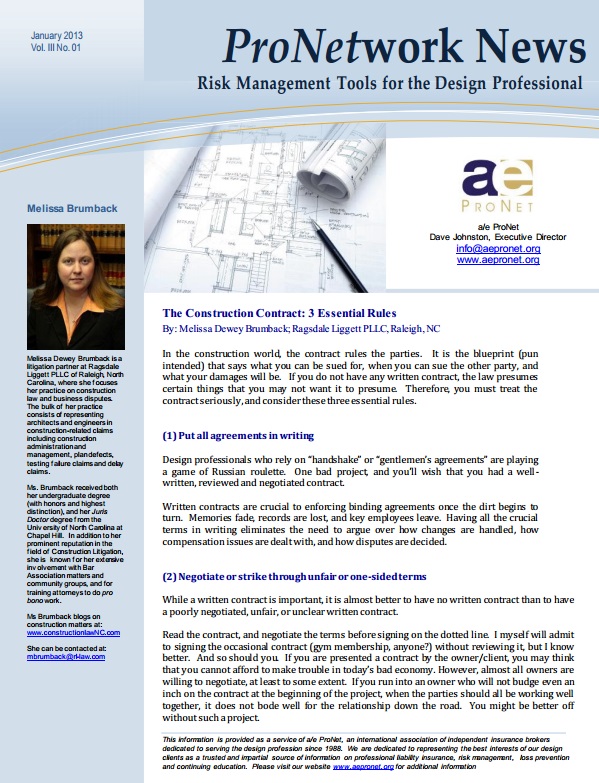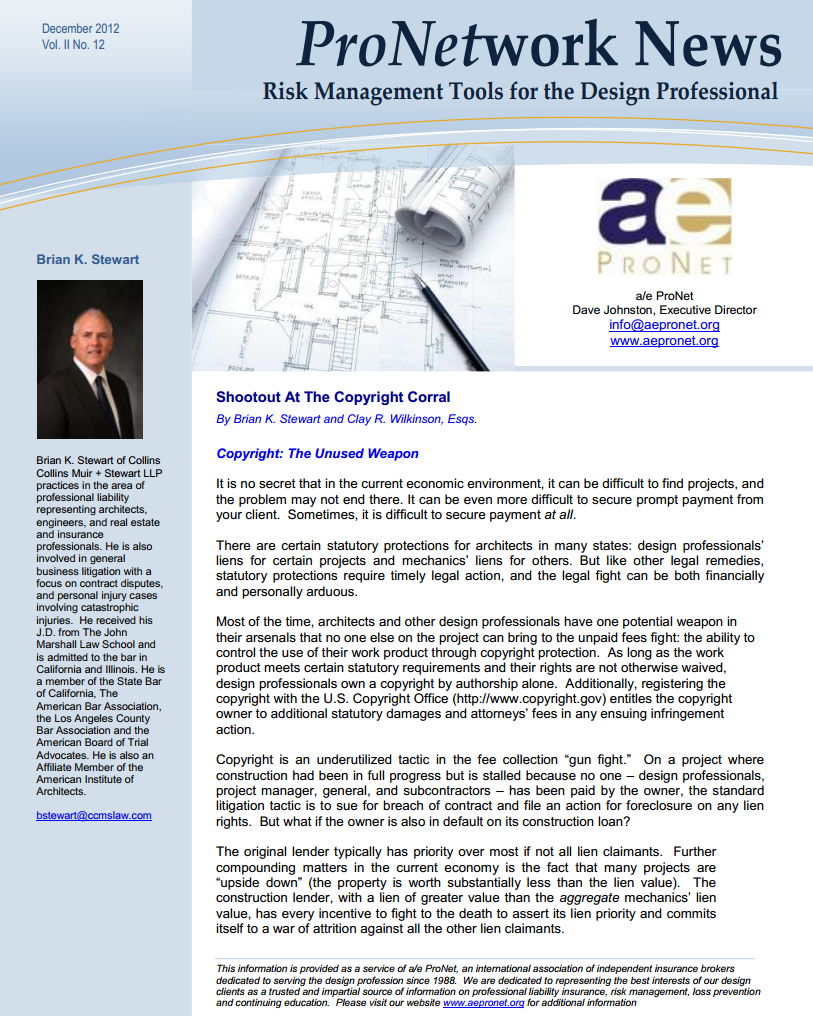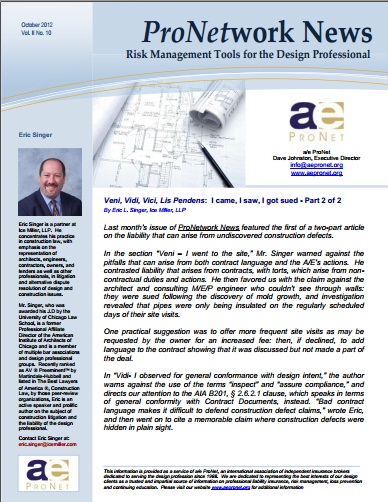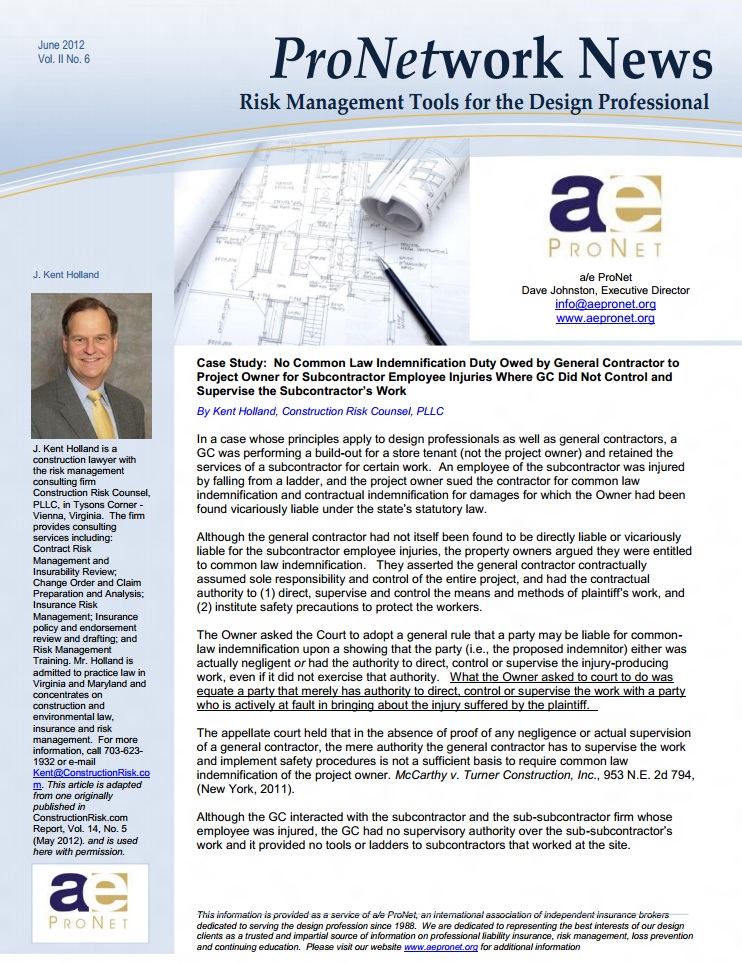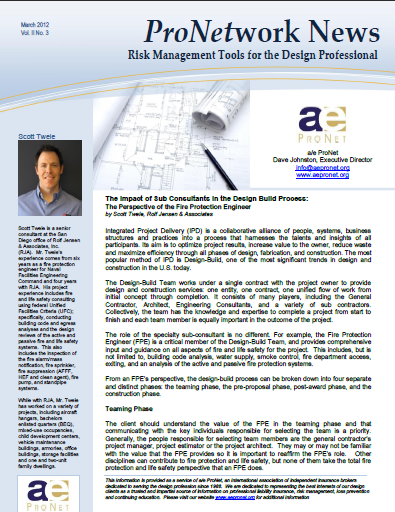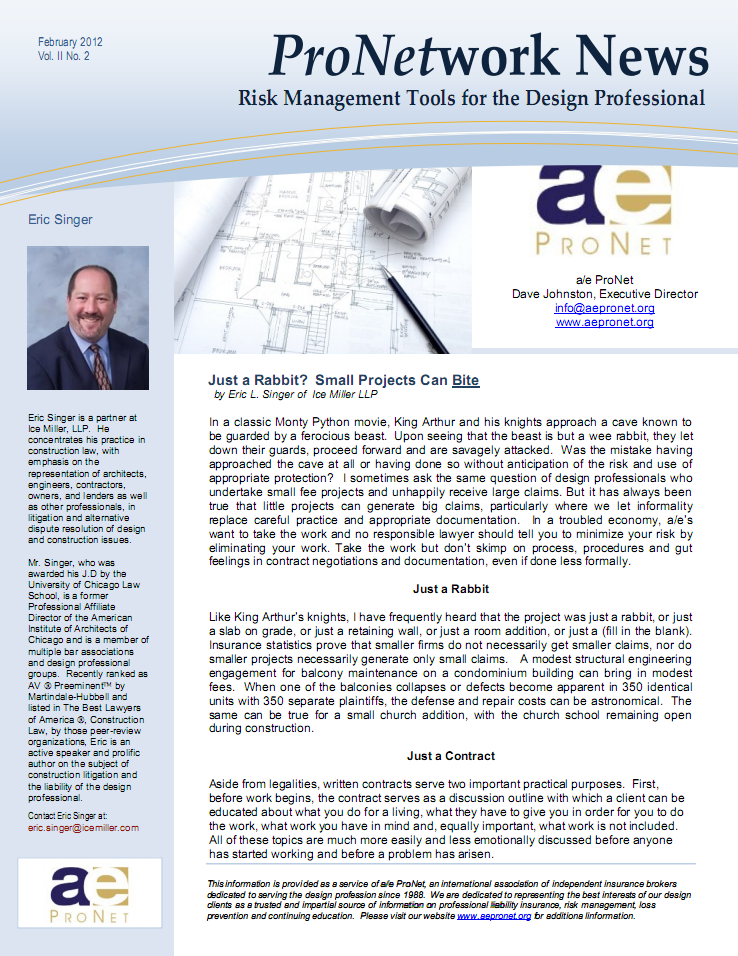 Who doesn’t love a good Monty Python reference? With our latest ProNetwork Newsletter, Just a Rabbit? Small Projects Can Bite, we’ve proven that the classic moments in Monty Python and the Holy Grail can be made analogous to anything, even insurance. Or, more accurately in this case, to potential professional liability claims:
Who doesn’t love a good Monty Python reference? With our latest ProNetwork Newsletter, Just a Rabbit? Small Projects Can Bite, we’ve proven that the classic moments in Monty Python and the Holy Grail can be made analogous to anything, even insurance. Or, more accurately in this case, to potential professional liability claims:
“King Arthur and his knights approach a cave known to be guarded by a ferocious beast. Upon seeing that the beast is but a wee rabbit, they let down their guards, proceed forward and are savagely attacked. Was the mistake having approached the cave at all or having done so without anticipation of the risk and use of appropriate protection? I sometimes ask the same question of design professionals who undertake small fee projects and unhappily receive large claims. But it has always been true that little projects can generate big claims, particularly where we let informality replace careful practice and appropriate documentation. In a troubled economy, a/e’s want to take the work and no responsible lawyer should tell you to minimize your risk by eliminating your work. Take the work but don’t skimp on process, procedures and gut feelings in contract negotiations and documentation, even if done less formally.
Just a Rabbit
“Like King Arthur’s knights, I have frequently heard that the project was just a rabbit, or just a slab on grade, or just a retaining wall, or just a room addition, or just a (fill in the blank). Insurance statistics prove that smaller firms do not necessarily get smaller claims, nor do smaller projects necessarily generate only small claims. A modest structural engineering engagement for balcony maintenance on a condominium building can bring in modest fees. When one of the balconies collapses or defects become apparent in 350 identical units with 350 separate plaintiffs, the defense and repair costs can be astronomical. The same can be true for a small church addition, with the church school remaining open during construction.
Just a Contract
“Aside from legalities, written contracts serve two important practical purposes. First, before work begins, the contract serves as a discussion outline with which a client can be educated about what you do for a living, what they have to give you in order for you to do the work, what work you have in mind and, equally important, what work is not included. All of these topics are much more easily and less emotionally discussed before anyone has started working and before a problem has arisen.
“I frequently receive calls about contracts just as the a/e is finishing Construction Documents and realizes either that nothing has been paid to date or that a risky project is about to go out for bid. This is not ideal, but very common, and still better than having the discussion after CDs are out or a problem has arisen. I also frequently receive calls after the contract is signed, work is proceeding and could I just take a quick look at the contract, because it is “just a room addition” or similar small project? Once signed, there is little I can do but warn the a/e of the teeth on that rabbit.
“Contracts serve a second important purpose as well – to tell a third party (judge, jury, arbitrator, Grand Inquisitor) what the parties thought about the scope of services, risks, rewards and the deal before they got to court. If you show up to court with a contract calling you “contractor,” saying that you will perform your services to the “highest, best” standards of care and that you intended to “ensure” a successful project, you will be hard pressed to proclaim otherwise, even if Mrs. Justaroomaddition was a little flaky and Mr. Justaroomaddition employed his brother-in-law to do some of the work. You will also create insurance coverage problems for the claim, perhaps ending up with two lawyers and two lawsuits instead of one of each. Use the same scrutiny of contract language for your small projects that you use for your large projects, because the same words can cause problems regardless of size of the work.”
Visit our website to continue reading this newsletter. You may download the full PDF version here.
ProNetwork News is the latest value-added resource produced by a/e ProNet. Each monthly edition includes an informative, timely article relevant to the design industry and authored by an industry expert. Contact your a/e ProNet broker for early access to these excellent newsletters.
About the Author: Eric Singer is a partner at Ice Miller, LLP. He concentrates his practice in construction law, with emphasis on the representation of architects, engineers, contractors, owners, and lenders as well as other professionals, in litigation and alternative dispute resolution of design and construction issues. Eric is an active speaker and prolific author on the subject of construction litigation and the liability of the design professional.
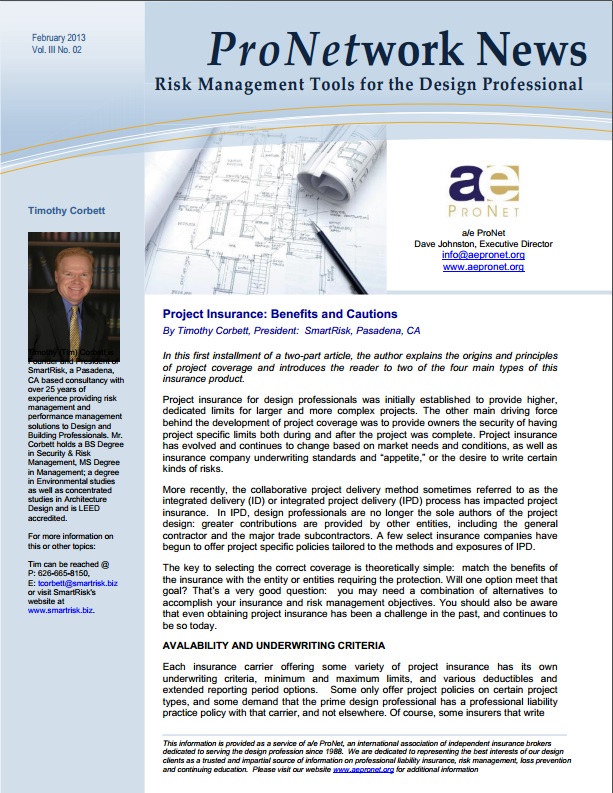 The February 2013 issue of ProNetwork News is the first installment of a two-part article; the author, Tim Corbett of SmartRisk explains the origins and principles of project coverage and introduces the reader to two of the four main types of Project Insurance.
The February 2013 issue of ProNetwork News is the first installment of a two-part article; the author, Tim Corbett of SmartRisk explains the origins and principles of project coverage and introduces the reader to two of the four main types of Project Insurance.
